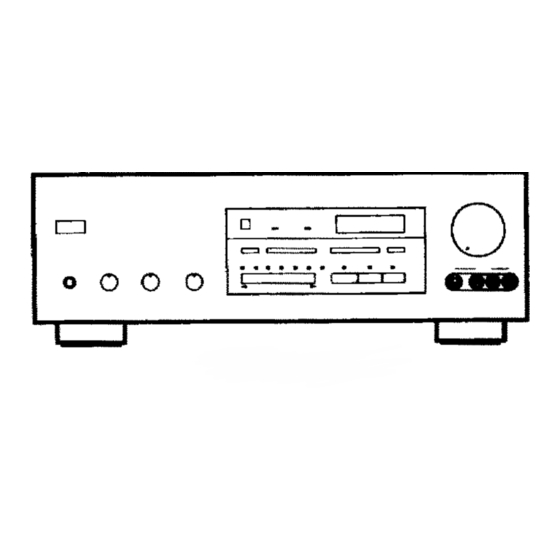Yamaha DSP-A970 Manual de operação - Página 14
Procurar online ou descarregar pdf Manual de operação para Amplificador Yamaha DSP-A970. Yamaha DSP-A970 48 páginas. Digital sound field processing amplifier

E Voltage Selector (General Model only)
Be sure to set to the line voltage in your area before applying
power. Consult your dealer if unsure of the correct setting.
F Switched AC Outlets
You may plug other audio components into these sockets as long
as their combined power consumption does not exceed the
specified value shown. "Switched" means that these components
are turned on and off by this unit's power switch.
G Unswitched AC Outlet (U.S.A., Canada and General Models)
The total power consumption of audio components plugged into
this socket should not exceed the specified value shown.
"Unswitched" means that power is available even when this unit is
off.
NOTE: If an external power amplifier is connected to the front effect
or rear effect output jacks, the corresponding internal amplifier will be
turned off and no output will be available at the speaker terminals.
12
Rear Panel Switch and Control Settings
There are several switches and controls on the rear panel that
you'll have to check before operating your system, and it's a good
idea to do it before you connect cables. Locate the MAIN LEVEL
slide switch (C) and FRONT MIX slide switch (B) below the
EFFECT terminal group. Make sure the MAIN LEVEL switch is set to
"0 dB" and that the FRONT MIX switch is set to "OFF" for 7 or 6
speaker driving.
In a 5 or 4 speaker system, set the FRONT MIX switch to "ON".
Next, set the NTSC/PAL switch (A) to the position corresponding
to the standard which your video equipments employ. (General Model
only)
General Instructions for Connections
Make sure that you have the left (L) and right (R) channels
correctly connected. That means that jacks marked "L" on this unit
must be connected to jacks marked "L" on other units. Likewise with
the "R" jacks. This is easy if you remember to always use the red plug
for the "R" jacks and the other plugs for the "L" jacks.
With speaker connections you must also be sure that the polarity
is correct. For each amplifier and each channel, connect the plus (+)
terminal of the amplifier to the plus terminal of the speaker, and
connect the minus (–) terminal of the amplifier to the minus terminal
of the speaker. To keep track of polarity, use a speaker cable that has
one of the two wires marked by a stripe or a different color.
